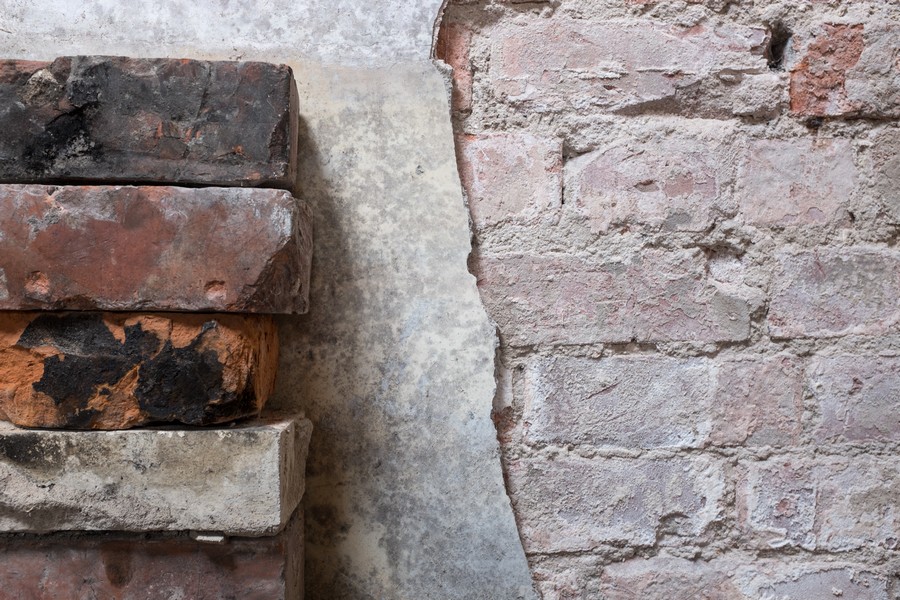Contact Brighton Damp Treatments Now to Speak With an Expert.

Moisture can damage supporting structures such as walls, floors, ceilings and roofs. All wood elements are at risk of deterioration if the humidity is not properly managed and removed. If left unchecked, it could lead to more serious problems by compromising the support structure of the building.
It’s wiser to prevent a problem than tackle it after the fact, as solutions are often more complex (and costly) than initial prevention efforts. That said, if the issue has already been identified by the time action is taken, then treatment, repairs and replacements may be the only available options.
Signs of dampness on walls can indicate that the damp proof course has been breached or the exterior coating no longer prevents rain from entering. Brighton Damp Treatments have successfully treated a number of rising damp issues with treatments, repairs and preventive measures to ensure buildings are adequately protected against moisture. If you have any concerns about a property’s condition, don’t hesitate to call our experienced team at 01273 920588 for help.
Groundwater seepage through brickwork, or capillary action, can lead to rising damp. When gravity and evaporation impede the upward pull of water, a tide mark around one meter high will be visible. There may also be signs of rising damp higher than one meter due to non-porous render or wall paint. Plaster, timber and wallpaper that surround walls often experience visual damage as they break down and disintegrate.
Salt deposits in groundwater may migrate up through the bricks, resulting in white stains on the internal walls – a telltale symptom of rising moisture.

It is commonplace to mistake rising damp for other forms of moisture, thus it is essential to employ a damp expert in order to accurately identify the type of dampness in your building. A misguided assumption that often exists is that when you spot a tide mark on the wall, this automatically indicates an issue with rising damp.
External faults, such as inadequate guttering or vegetation clogging the gutters, can be linked to signs of penetrating damp instead of rising damp.
It’s worth noting that your property may not have had an efficient damp proof course installed within the past two decades. If you observe mould on your walls, this could signal humidity from condensation. Rising damp differs from other varieties of moisture in that it cannot occur above ground level as it rises up the walls from the soil.
This website provides an understanding of the most common signs of rising damp. Read on to learn about the sources of these indications in your home and why it’s best to get a professional examination for confirmation.
It is essential to accurately diagnose the source of a rising damp problem in order to resolve it swiftly. Brighton Damp Treatments’ seasoned surveyors can conduct an in-depth inspection of your property and determine its root cause. An untrained eye may struggle to differentiate rising damp from other kinds, such as condensation or penetrating damp. Let our experts lend their assistance; simply call 01273 920588 for help.
Contact Brighton Damp Treatments Now to Speak With an Expert.
There are several signs that could indicate rising damp in your home. Being aware of these can help you tackle the problem promptly.
Tidemarks and damp patches on walls are among the most prevalent signs of rising moisture. These are caused by evaporation from wetness and salt migration up the wall. Tidemarks show from floor level to roughly one metre above it; alternatively, search for dark yellow or brown stains at this same height.
If the damp is more than one metre up the wall, it may be due to rising damp. However, penetrating damp could also be present and so care should be taken when making an accurate diagnosis.
If your home has damp or moist patches on the walls, it is likely to be caused by rising damp. This occurs when moisture from the ground at the base of your property walls rises through brick or stonework due to capillary action. The presence of rising damp can be detected if there are only lower wall section damp patches and the house is on the ground floor. If an effective Damp Proof Course isn’t present at the bottom of a wall, then it will be susceptible to rising dampness; this only applies to ground floors.
If your floor is above the ground level, you’re probably dealing with a different form of dampness (likely from either penetrating or condensation).
The unmistakable odour of dampness in a property is one of the most obvious signs. Even if it’s not visible, you can usually smell it. It’s an unpleasant, musky and moist scent. Diagnosing the kind of damp damaging the building may be difficult to determine without help from a Damp Surveyor – different treatments are required for different types so getting an accurate diagnosis is vital for swift resolution.
The presence of black mould in the lower regions of your wall suggests moisture. If it’s present, condensation is likely; however, if seen on the bottom half of ground floor walls, it could point to rising or penetrating dampness that requires attention.
Moisture is drawn up the stonework due to capillary action. Rising from the ground, it brings hygroscopic salts with it, which damage plaster and decoration when inside a property. These salts draw moisture from the air and can make walls feel damp when touched. As evaporation happens in the walls, the salts come to the surface; occasionally seen as a white coating.
If your wall is affected by rising damp, it will also be impacted by hygroscopic salts which must be taken into account to fix the issue.
Rising humidity often manifests itself in peeling wallpaper or paint. As the moisture builds up within your walls, it can cause wallpaper or paint to peel from the wall, particularly around skirting boards. The edges may curl upwards away from the wall and typically this begins above the skirting board.
Peeling wallpaper or paint might suggest a condensation or penetrating damp issue in the home, requiring an accurate diagnosis to ensure the appropriate repair specification is carried out to solve the problem.
If you detect flaking, bubbling or powdery deposits on the walls or floor of a ground-level room, it could be a sign that your property has rising damp. If left untreated, the moisture from humidity can lead to massive damage – with plaster crumbling from the walls and becoming increasingly costly for owners to rectify. Thus, any signs of degrading should be addressed as soon as possible.
Skirting boards and floors may deteriorate if the increasing dampness in your home is neglected for an extended period. Excessive moisture can damage timbers, allowing fungal infestation to take hold. As with many types of damp, rising damp can cause rot in affected timber. Property owners should be wary of skirtings or other timbers that appear cracked or disintegrate upon contact. If the home has been damaged by long-term wetness, visible fungus growth on skirting boards or flooring timber may be present.
If left exposed to high levels of moisture for a lengthy period, unprotected iron and steel will corrode. This can result in the property becoming much less secure as rust weakens fasteners such as cavity wall ties, thus jeopardising the structure’s integrity.
Ground-floor walls can sustain substantial damage due to rising damp. Fixing crumbling bricks and mortar can prove costly. Loose or crumbling masonry, caused by rising damp, is often highly porous and allows penetrating damp deeper into the wall, worsening the harm. Fortunately, decaying bricks or mortar can be easily identified; this condition is known as fretting. When conducting an inspection of your external brickwork or stonework make sure to check the cement joints too.
If you spot any fissures or powdery mortar, or if the brickwork is deteriorating, this is a sign of fretting caused by moisture and salt deposits. In advanced cases, the mortar may have almost completely disappeared from the joints.
Call Our Brighton Damp Experts team now for a free quote, consultation and advice.
Our experienced damp surveyor will conduct a comprehensive damp survey of the affected area before beginning any treatment for rising damp. This enables them to accurately diagnose the kind of problem your house is facing and define the repairs needed to address it. Our expert technicians will carry out these repairs in an efficient and economical way. The type of remedial work needed depends on the property’s type and condition – this may involve removing wall fabric, repairing an existing DPC or installing a new one.
If the existing damp-proofing system fails, our specialists will install a new one. A chemical DPC is often the most economical solution for rising dampness. This technology seeks to form a continuous waterproof layer that acts as a barrier, preventing ground moisture from travelling up masonry walls. To do this, small holes must be drilled in the wall so that new DPC material can be inserted and protect against further dampness. All plasterwork affected by hygroscopic salts or rising damp has to be removed.
To avert salt movement and hasten the drying of plaster, a cavity wall damp proof membrane can be laid before re-plastering. This guarantees that any areas of the plaster affected by salt have been eliminated. Afterward, one may coat the wall with renovating plaster to forestall further salt migration when installing the new DPC.
Don’t worry if you’re feeling anxious about this. Our professionals have been giving damp property services for both commercial and private properties around Brighton with 20 years of collective experience in the team. To give you reassurance, we can pinpoint your building’s damp issue, find the most suitable and economical solution for your particular problem, and offer a long-term guarantee on the repair work.

Brighton Damp Treatments offers a vast selection of items and brands. Every instance has its own set of necessities and restrictions, resulting in a broad variety of rot damage treatments and repair options.
Once any of the indicators previously mentioned appear, a specialist should address rising damp without delay. The longer it remains untreated, the more severe the consequences for the house’s structure become.
Please contact our team at 01273 920588 to arrange a survey. Each case is unique, so one of our surveyors will come to your home and go over your worries and needs to provide the most cost-efficient quote, giving you assurance.
Brighton Damp Treatments are specialists in damp proofing, able to provide inspections, treatments and repairs for wood, walls, ceilings and floors. Our customers include commercial property owners, property management firms and residential proprietors.
Our rot treatment experts will assess the severity of dampness in your residence. We specialise in specific damp and timber treatments and repairs, applying the most effective techniques to resolve the issue.
Our employees have had training that surpasses the Property Care Association (PCA) requirements. All of our surveyors are CSRT Certified Surveyors, guaranteeing the utmost level of service to our customers.
Benefiting from our services provides many opportunities: you can gain access to superior resources, attain more reliable and precise outcomes, reduce costs by a quarter, cut delivery times by one fifth, as well as boost customer gratification and allegiance.


Max and his team have been at our property all week and I really can’t thank them enough for the fantastic job they’ve done on plastering both our walls and ceilings. They have literally transformed the appearance of our house! Not only has Ma…
From start to finish Max has been incredable. His knowledge lin damp proofing is second to none and his team where very clean and polite. The plastered finish was like glass so happy we choose Max Plastering for job.
Lovely bunch of lads left a very neat and clean job. Problem was solved.
Perfect Finnish and all left clean and tidy and no mess. Used Max previously and would not hesitate to ask him carry out more work.
Max, Harvey and Stuart arrived promptly as arranged. Done a great job on our outside rear wall. Work completed to a high standard, removal of all old material and cleaned up after themselves. I am so pleased with the standard of their work they ar…
They turned up on time and carried out the works in a very professional manor leaving the front of the house clean and tidy. Very impressed would definitely recommend.
I have to say that on every level Max (with Stuart and Harvey) did an extremely professional job! They explained what they were going to do, they were polite and courteous and respected that they were coming into our home. The plastering is of the…
I called max and he managed to come around the same day to do a survey. The next day I received an extremely detailed survey compared to any other damp proofer which made me feel very at ease that he was going to do the right job. Max and team tur…
Contact Brighton Damp Treatments Now to Speak With an Expert.